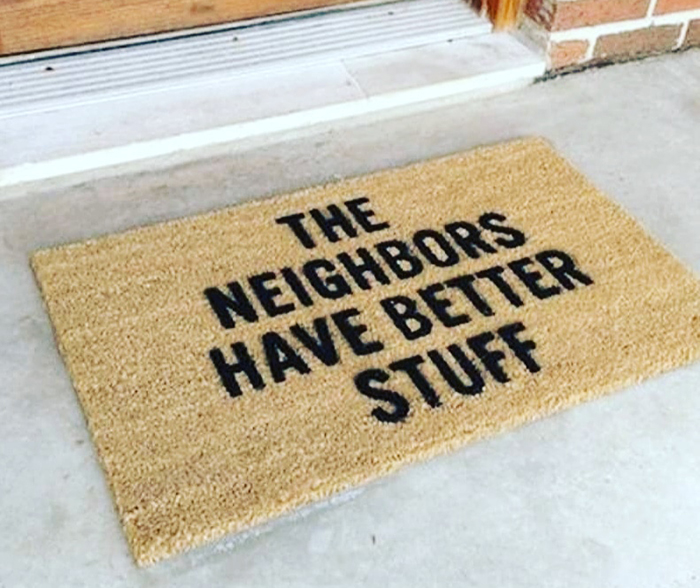
A locked door only keeps an honest person out, but there are simple ways to make breaking in more difficult and to slow a burglar at the front door. This buys the homeowner extra time for other defensive measures.

As preppers, we typically have a pretty firm grasp on what we can do to keep our families safe. Gun sales throughout America have gone through the roof in validation of this concept. The present-day coronavirus has us concerned about the desperation, wickedness, and craziness of other people, and as a result, we are taking steps to protect ourselves. This explains a rush to buy firearms for personal protection.
Protecting Your Home? Start at the Front Door
I would argue that the next, if not the first, logical step would be to harden your home. Now, most of us probably don’t have a homestead deep in the woods somewhere that we bought and paid for long ago. Most of us are probably in our full-time homes with no second “bug out” home. As a result, when we talk about hardening our retreat, we’re really talking about doing what we can to make our homes less vulnerable to home invasion.
I’m a locksmith by trade, and just last week our company worked with three different residences in our town after they’d been the victims of break ins. That’s an unusual amount of break ins for us. A majority of all break-ins are forced entry. In fact, in a poll of 86 burglars on how they broke into homes, going through an unlocked door – or kicking it open – was the top response. Slowing them down gives you extra time to protect yourself.
So, what are some of the things that we can do to further improve the strength of our doors and slow those burglars down? Here are nine steps to improving your front door security.
1. Screw the Strike Plate Into the Stud
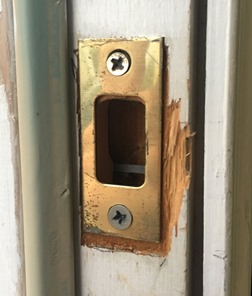
The strike plate is the metal part with a hole in it on the door frame that the latch enters. For some reason, the screws that accompany most locksets for the strike plate are only long enough to penetrate the door frame. As a result, it takes surprisingly little force to kick open the door. The screws provide an “anchor point”, if you will. And when the anchor point is only stuck in something a half an inch thick, there’s not a lot of material that the anchor point has to hold onto.
However, by screwing a 2.5” – 3”long screw in instead, you’ll actually anchor the strike plate into the stud framing the door, making for a much harder to kick down door. There will be a lot more “meat” for the screws to hang onto, and the likelihood that they’ll be kicked through the inside of your wall is incredibly slim. TUFF STRIKE plates are an option here.
2. Use Larger Strike Plates
This is the next logical conclusion to hardening your doors. Your typical lockset strike plate is about two inches long and has two screws going through it. So, if you can make the strike plate longer, and insert more screws into it, you’re going to end up with an even harder to kick down door. There are several different variations of these on the market going from about four inches long to the entire length of your door, and they’re all pretty easy to install (and relatively cheap).
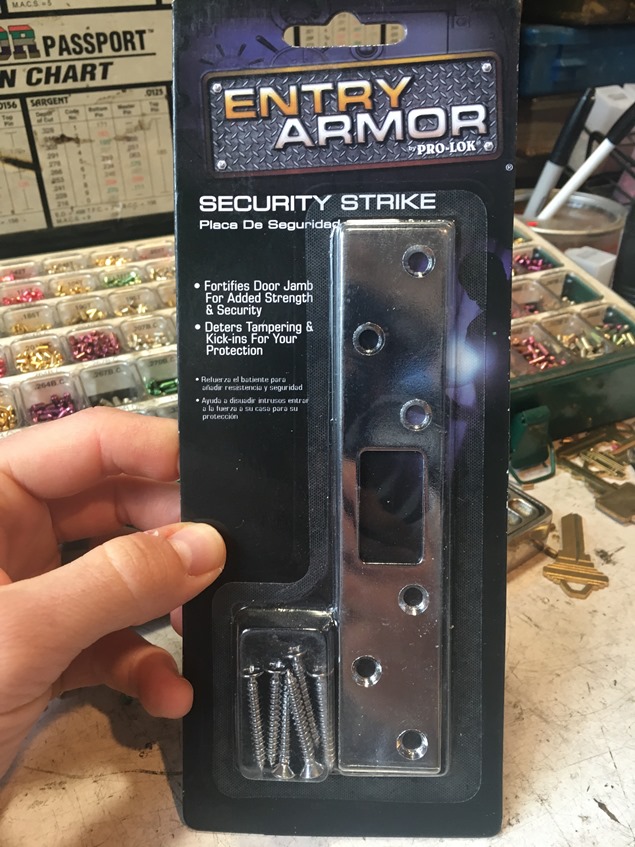
Kicking in a door is made a lot harder with these! They will slow any burglar.
3. Use Deadbolts with a Hardened Rod Core
One of the ways that a criminal may break into a door is by sawing through the actual deadbolt with a reciprocating saw. To combat this risk, you can buy a deadbolt with a hardened rod in the center of the bolt. The hardened rod is likely to chew through the teeth on the saw, making access in that manner both incredibly time-consuming and inefficient. If you’re home, this would give you more time to prepare to defend yourself and to call for help. If you’re not at home, this would improve the chances that somebody is likely to see the bad guy.
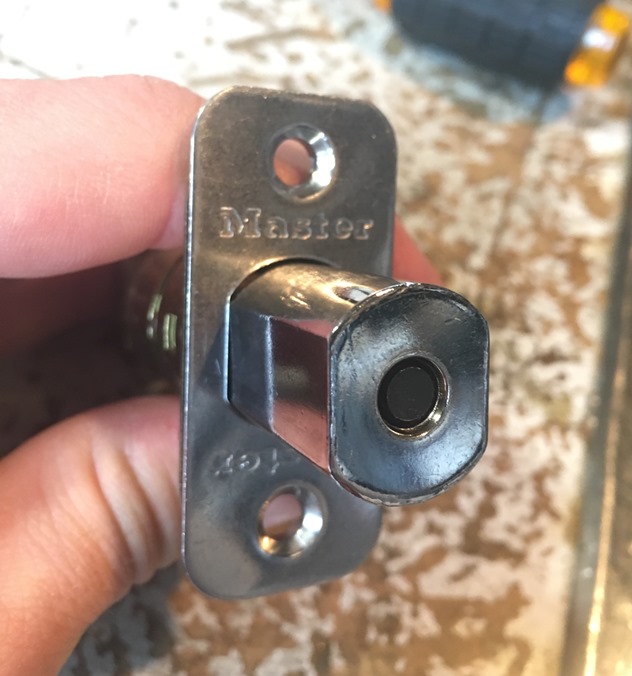
4. Make Sure You Have Deadbolts
It’s always incredibly surprising to me when I show up on a service call to a house that doesn’t have a deadbolt installed. A residential door without a deadbolt has an incredibly low security value. It doesn’t really matter what brand you pick, just as long as your door has one and you consistently use it.
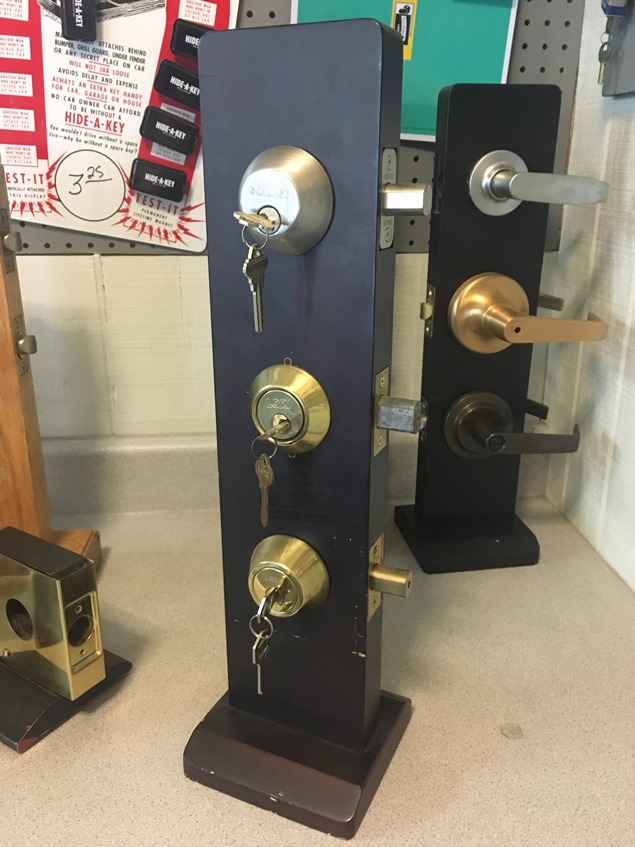
If you are concerned about brands, I’m personally a fan of Master Lock. I’ve found them to be a high-quality lock at a fair price. You can find them at your local lock shop. If you’d rather shop at your local hardware store, I like Schlage. Due to coronavirus, both Kwikset and Schlage are shutting down their Mexican factories though, so I would recommend upgrading these locks sooner rather than later if those are the brands you use.
5. Maintain Key Security
Perhaps the easiest way to rob a home is if you don’t even have to break in. That’s what can happen if a criminal has access to your house keys. Did you buy your house used? If so, did you rekey the locks when you moved in? If not, there’s no telling who the prior owner may have given your front door key to.
If you bought the house new, or did rekey the locks when you moved in, have you given out copies of your key to friends and neighbors who may have friends/relatives/kids that could be considered “seedy” individuals? If a broke kid with a drug problem knows he has access to your house key, that’s a lot of temptation to stare down. I’m not trying to create a myriad of hypotheticals here, but this kind of thing has happened before.
Have you posted a picture of your key with the cuts visible to social media? If so, you’ve essentially told the whole world what it takes to gain entry to your house. Within about a week of working as a locksmith I was able to read both what type of key blank, and what the cut measurements were to a standard house key just by looking at it. The point is, it doesn’t take a lot of hard work for a criminal to gain the same knowledge.
Related article: Protecting Your Shelter for Personal and Financial Survival
Do you have a spare key hidden outside in an incredibly easy to guess spot? Please, please, please don’t ever “hide” your spare key underneath the welcome mat. That’s the most obvious place to look for a hidden key. If you’re going to hide a spare house key outside your house somewhere, do it both in an unassuming location, and make sure that nobody else can see you accessing it either. A hidden key won’t do you much good if the entire neighborhood can see you replace it back into its hidey hole.
6. Maintain Proper Deadbolt Spacing
Let’s say that you just bought a new door that doesn’t have the lock and doorknob holes pre-drilled, or you’re looking at adding an additional deadbolt to your door. Did you know that by increasing the space between the doorknob and the deadbolt you can actually increase the force it takes to kick down your door? From a physics perspective, it spreads the load of a kick along the door frame by doing such rather than having all of the resistance just be at one point.
If you want off-the-shelf door-hardening equipment, look into Armor Concepts. They sell complete hardware to reinforce residential doors.
Obviously, you don’t want a deadbolt to be placed ridiculously high on your door, but you can still have the door appear presentable and have the deadbolt an inch or two higher than you normally would have installed it.
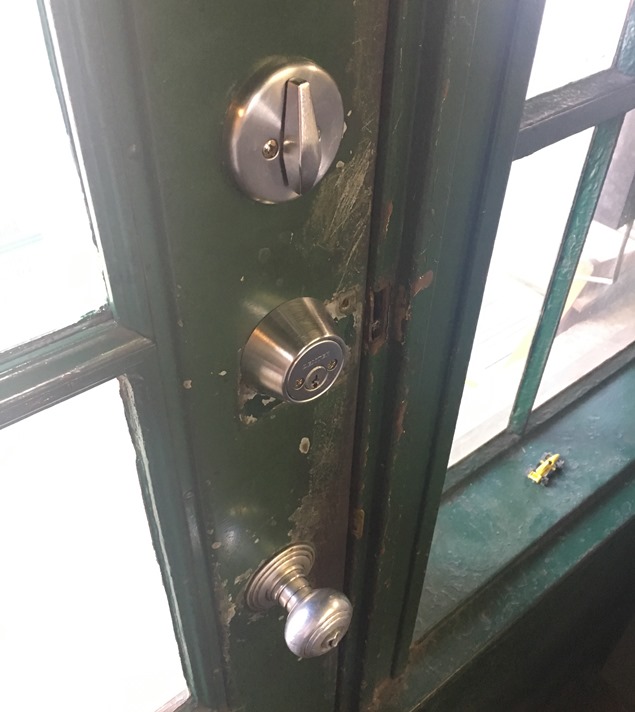
7. Use a Door Bar
I think these things are pretty cool. You remember the old cartoons where the main character was chased by somebody into a room where they would wedge a chair underneath the door handle to act as a brace? These are a much less annoying version of that. You can typically pick them up for around $20 or so, they can unassumingly lean in a corner somewhere, and they’ll drastically increase your door security. They’re also available online. When my little sister moved into her first place, this was one of the first home warming gifts that I gave her. They’re incredibly easy to use, and they travel really easy to boot.
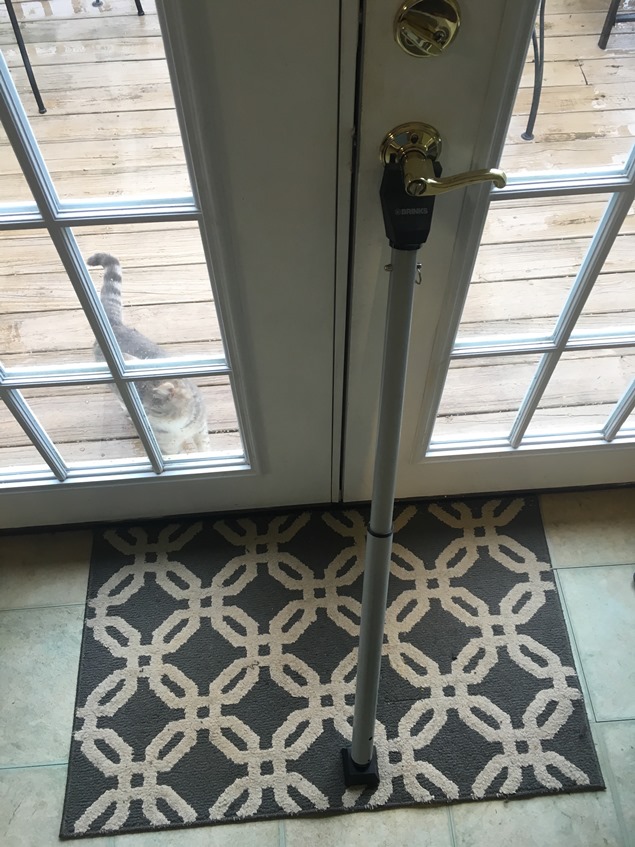
8. Use Bottom-of-the-Door Barriers
These are relatively new to the market, but I think they’re fascinating. There’re several versions of these out there, but so far, my two favorites are the HAVEN lock and the NightLock. They’re basically a raised barrier that sits along the bottom edge of the door, creating an incredibly forced-entry resistant door. You typically would only activate these once you are already inside the home, but HAVEN lock does have models available that you can activate from your smartphone, making your home more secure even when you are gone. These will slow any burglar!
9. Use Night Latches
A night latch is essentially a deadbolt that you can only lock from the inside. Typically, I see them installed rather high on a door, and there’s also typically no way from the outside of the door to even tell that there is a night latch installed on the door. Once inside, you would lock the latch (which is mounted on the surface of the door) and it’ll slide into a strike mounted on the door frame. It’s just another way that you can help to ensure that your doors are more secure when you’re at home.
Slow a Burglar at the Door Summary
When it comes to door security, it really comes down to how much you want to spend. You can spend thousands of dollars per door, turning your home into a veritable Fort Knox, or you can take reasonable levels of precaution with only $50 to $100 per door.
The point is, there are things that you can do now to help to improve your door security, and thus improve your safety, all in the span of a weekend and without breaking the bank. Obviously, there’s no way to make a home 100% impenetrable, but by following just a few of the above suggestions, you will make it exponentially harder for somebody undesirable from gaining access to your home.


3 comments
Any suggestions for doors that open out? I have impact windows and doors but code here in south FL has all doors opening out.
First thing you have to be concerned about is the hinges. Odds are they’re exposed to the bad guy, and thus, vulnerable. Buy and install some jamb pins in your hinges to prevent some of these attacks.
I’m retired law enforcement and these are all really good things. Especially if someone is considering a remodel or new construction; security and safety can be built into the project.
Here are more safety and security ideas: https://tinyurl.com/yddolg3u and or https://www.usfa.fema.gov/downloads/fief/up_in_smoke_home_checklist.pdf